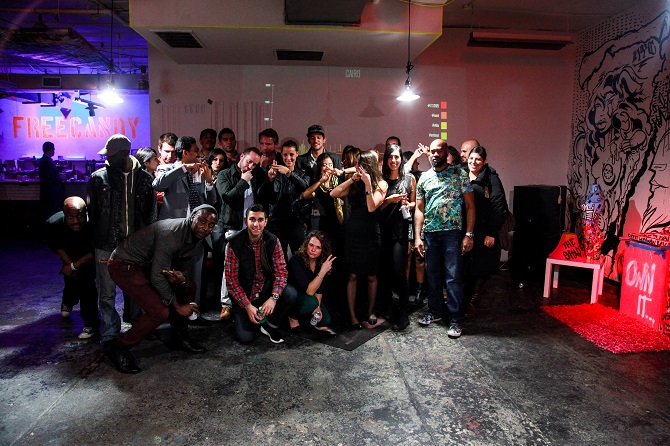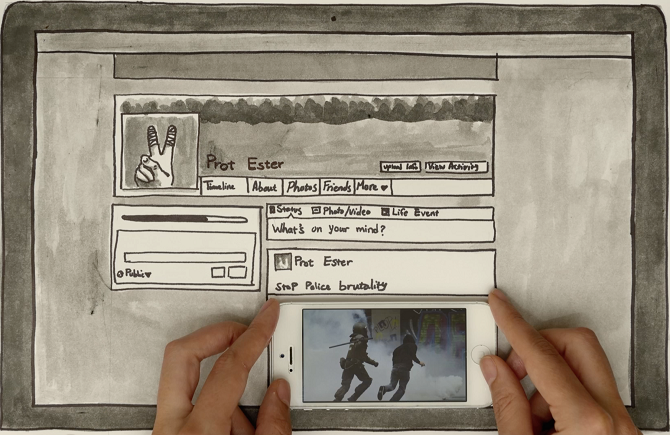Inspiring new citizen journalism startup Protestify and its founder, Columbia University graduate Christina Hawatmeh bring fresh ideas in today media. All about this project, their Kickstarter campaign and new media you can read in our interview with Christina Hawatmeh.
Q: What inspired you to start Protestify?
A: I could not find content through Twitter on the Arab Spring. I was long before fascinated with social media as a political tool, and went back to SIPA at Columbia to do my Masters to understand Technology and Government Better. I realized the problem that existed was a technical one, and began to develop a product, in 2012. that later became Protestify. I approached my CTO, almost a year and a half ago, while he was mentoring in the Launching New Ventures class, which I took at CBS. There were two factors that interested him with the concept - first, he had long since felt that reporting of the events happening around the world more often than not is presented in a very biased manner, depending on the media outlets. A platform that would promote citizen journalism and provide unbiased, raw reports could help remedy to a good extent. The second, was the challenges in terms of technology, especially with social media. Combining information from multiple social media sources and building a coherent story based on visuals alone is inherently a complex problem.

Q: Protestify - interesting name, tell us more about it.
A: I had one day where Turkey and Egypt events were flooding my Facebook newsfeed when I was building Protestify and realized that’s what people were doing when they were uploading to social media: protesting and testifying.
Q: Your opinion about citizen journalism and how do you see work and influence of citizen journalists in current media trends?
A: I think the term citizen journalism has been thrown around a lot, but citizens haven’t been given credit they deserve, especially when their life is on the line taking that photo. News agencies haven’t found away to quickly get editorial rights to user generated content. For example, when a user submits content to a major news source, they sign something usually that says the news agency owns it, and you don’t get credit or compensation. We first struggled with giving citizen journalists compensation but after a lot of customer discovery we realized our demographic was largely unemployed youth all over the world who in some cases have spent years on the streets protesting for a better life. That is why we pay the user for their content. We hope to get the user’s image or video to the newsroom with editorial rights in under 5 minutes after full development. This takes news agencies uncertain hours now. That is half of our business. The other half is the unbelievable data that citizen journalists have produced on social media about causes they care about. We have over 13 million visual points stored in our database on a range of protests around the world. This is significant and hashtags, which our research is based on should be looked at as an important data source in news agencies going forward. We look forward to providing them with it. For example, we can give news agencies raw data, accompanied with a data visualization on the life of #ferguson over 3 months.

Q: How do you see relations between citizen and traditional journalism? Do you think that traditional media became more open toward citizen journalism and online content ?
A: Yes, news agencies are looking for new ways to engage with user generated content. Digital Media is failing within major news organizations and they are looking for new platforms and tools, like ours to tell their stories better.
Q: What Protestify requires from its users?
A: When we receive your photo we will respond back to you on Twitter with a click through copyright agreement. Then if a news agency wants to buy your photo, we will pay you through PayPal. We require that the photo or visual is your own, we will verify that photo or video through our technology. We require that you honor humanity, and the core of journalism which is no propaganda and no extreme violence among other things.
Q: You launched Kickstarter campaign. Your expectations from this initiative?
A: We are looking to raise 32k by December 3rd which is 15 days away, and we have only reached 8500, so we still have a long way to go. This money will be dedicated to our engineers, so they can turn our beta into a marketplace.
Q: Protestify plans for the future.
A: We want to innovate citizen journalism and disrupt visual news. We plan to map the whole social media space for protest news. We will be tackling this one social media source at a time and scale up. We have a modular, extensible information retrieval mechanism that we will continue to tweak with the addition of each source. We aim to add at least two more sources within six months. Further scaling will depend on our revenue generation and fundraising efforts.
Q: How do you see citizen journalism in the future ?
A: The ability to stitch together a story based on visuals, collected from multiple social media outlets, ensuring that they are related and reasonably verified, with the help of technology and coming up with interesting visualizations, can provide a unique alternative (and disrupt) to traditional reporting. The significant challenge is the vast amount of information that is getting generated with each of the social media outlets, especially Twitter. The amount of spam is mind boggling and the presence of bots that produce this spam really do not help. We are interested in a subset of this information. Hence, filtering out based on our relevant search criteria, filtering out spam, ensuring that all this get processed in near real time fashion, the visuals can be accessed online in a fast manner, are the challenging issues we have been focusing on. We built intelligent spam filters and indexing techniques to do this.
NewsMeBack team wishes great success to Christina Hawatmeh and Protestify in their future work!